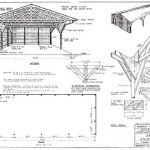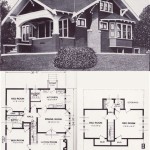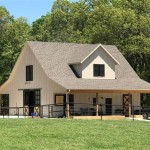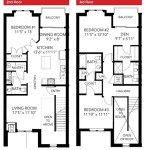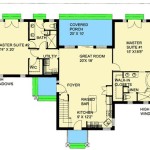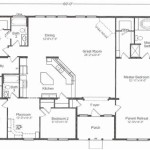Frank Lloyd Wright Inspired House Plans: Principles and Modern Interpretations
Frank Lloyd Wright, a name synonymous with architectural innovation and organic design, left an indelible mark on the landscape of 20th-century architecture. His philosophy, deeply rooted in connecting structures with their natural surroundings, continues to inspire architects and homeowners alike. Frank Lloyd Wright inspired house plans offer a unique blend of aesthetics, functionality, and a profound connection to the environment. These plans, while not exact replicas, capture the essence of Wright's vision and translate it into livable, modern spaces.
Understanding the core tenets of Wright's architectural philosophy is crucial for appreciating and implementing house plans inspired by his work. His designs were not merely about creating buildings; they were about crafting holistic living environments that fostered harmony between humans and nature. This involved considering factors such as site orientation, material selection, and the flow of interior spaces.
Key Principles of Frank Lloyd Wright's Architecture
Several fundamental principles underpin Frank Lloyd Wright's architectural style. These principles inform the design process and contribute to the distinctive character of Wright's creations. Understanding these principles is essential for discerning authentic Frank Lloyd Wright inspired house plans from mere imitations.
Organic Architecture: At the heart of Wright's philosophy lies the concept of organic architecture. This principle emphasizes the importance of integrating the building with its natural setting. The structure should appear to grow naturally from the land, utilizing local materials and reflecting the surrounding landscape. This is achieved through careful consideration of site topography, vegetation, and sunlight.
Wright believed that buildings should be designed in harmony with their environment, rather than imposing themselves upon it. This meant minimizing disruption to the natural landscape and incorporating natural elements into the design. For example, a house built into a hillside, utilizing natural stone from the site, and featuring expansive windows to capture views of the surrounding landscape would embody the principles of organic architecture.
Horizontal Emphasis: Wright's designs are often characterized by a strong horizontal emphasis. This is achieved through the use of long, low rooflines, projecting eaves, and ribbon windows. The horizontal lines visually connect the building to the ground, reinforcing the sense of integration with the landscape. This also contributes to a feeling of spaciousness and openness, both inside and out.
The horizontal emphasis also serves to subtly counter the verticality of trees and other natural elements, creating a balanced visual composition. By drawing the eye along horizontal lines, Wright's designs encourage a sense of tranquility and serenity, further enhancing the connection to the natural world.
Open Floor Plans: Another defining feature of Wright's architecture is the open floor plan. This design approach breaks down traditional barriers between rooms, creating a more fluid and interconnected living space. The emphasis is on shared spaces, such as living rooms and dining areas, which are designed to foster interaction and a sense of community within the home.
Open floor plans were a radical departure from the compartmentalized layouts of traditional Victorian homes. Wright believed that these rigid divisions restricted movement and communication. By creating open, flowing spaces, he aimed to promote a more relaxed and informal lifestyle.
Natural Light and Ventilation: Wright meticulously designed his buildings to maximize natural light and ventilation. Large windows, skylights, and carefully positioned openings were used to bring sunlight deep into the interior spaces and promote natural airflow. This not only reduced the need for artificial lighting and air conditioning, but also created a healthier and more comfortable living environment.
The strategic placement of windows allowed Wright to capture views of the surrounding landscape, further blurring the boundaries between indoors and outdoors. Natural light was not only functional but also served as a key design element, creating dynamic plays of light and shadow throughout the day.
Use of Natural Materials: Wright favored natural materials such as wood, stone, and brick. These materials were chosen not only for their aesthetic qualities but also for their durability and ability to blend seamlessly with the natural environment. He often used these materials in their raw, unadorned state, allowing their natural textures and colors to shine through.
The use of natural materials extended beyond the exterior cladding. Interior features such as fireplaces, built-in furniture, and flooring were also crafted from wood, stone, or brick. This created a cohesive and harmonious design, blurring the lines between interior and exterior spaces.
Interpreting Wright's Principles in Modern House Plans
Modern Frank Lloyd Wright inspired house plans strive to faithfully interpret these core principles while adapting them to contemporary living requirements and technological advancements. This involves balancing the desire to emulate Wright's aesthetic with the need to create functional and energy-efficient homes.
Adapting Organic Architecture: Modern interpretations of organic architecture often involve careful site planning to minimize environmental impact. This may include incorporating sustainable building practices, such as using recycled materials, implementing rainwater harvesting systems, and designing for passive solar heating and cooling.
Furthermore, modern designs may incorporate green roofs, living walls, and other elements that further integrate the building with its natural surroundings. The goal is to create a building that is not only visually harmonious with its environment but also contributes to its ecological health.
Modernizing Horizontal Emphasis: While maintaining the strong horizontal lines characteristic of Wright's designs, modern house plans may incorporate contemporary materials and construction techniques. For example, large expanses of glass can be used to create a seamless connection between interior and exterior spaces, while steel beams can be used to achieve long, uninterrupted spans.
The use of cantilevered structures, a common feature in Wright's designs, can be further enhanced through modern engineering, creating dramatic overhangs that provide shade and visual interest. The horizontal emphasis can also be reinforced through the landscaping, using low walls and plantings to create a sense of continuity between the building and its surroundings.
Evolving Open Floor Plans: Modern open floor plans often incorporate flexible spaces that can be easily adapted to different uses. This may involve using movable partitions or strategically placed furniture to define different zones within the open space. The goal is to create a living environment that is both spacious and adaptable to the changing needs of the occupants.
While maintaining the open feel of Wright's designs, modern house plans may also incorporate strategically placed walls or screens to provide privacy and acoustic separation where needed. This allows for a balance between shared spaces and private retreats within the home.
Enhancing Natural Light and Ventilation: Modern technologies allow for even greater control over natural light and ventilation. High-performance windows with low-E coatings can be used to minimize heat gain in the summer and heat loss in the winter. Automated skylights can be programmed to open and close based on temperature and humidity levels, optimizing natural ventilation.
Smart home systems can also be used to control lighting and shading based on the position of the sun, maximizing energy efficiency and creating a comfortable and healthy living environment. The integration of technology allows for a more sophisticated and nuanced approach to harnessing the benefits of natural light and ventilation.
Sustainable Material Choices: Modern Frank Lloyd Wright inspired house plans often prioritize the use of sustainable and locally sourced materials. This may include reclaimed wood, recycled concrete, and bamboo flooring. The goal is to minimize the environmental impact of the building and create a healthier indoor environment.
The selection of materials should also consider their durability and longevity, ensuring that the building will stand the test of time. By choosing materials that are both sustainable and durable, modern house plans can contribute to a more responsible and environmentally conscious approach to building design.
Considerations When Choosing Frank Lloyd Wright Inspired House Plans
Selecting a Frank Lloyd Wright inspired house plan requires careful consideration of several factors, including site characteristics, budget constraints, and personal preferences. It is important to work with an architect or designer who is knowledgeable about Wright's architectural principles and experienced in translating them into modern house plans.
Site Suitability: The chosen house plan should be well-suited to the specific characteristics of the building site. This includes considering factors such as topography, soil conditions, and solar orientation. The design should take advantage of the natural features of the site and minimize any negative impact on the environment.
A site that is sloped, for example, may be ideal for a house that is built into the hillside, while a site with abundant sunlight may be well-suited for a house with large expanses of glass. The design should be tailored to the unique characteristics of the site, rather than imposing a generic plan onto the land.
Budget Management: Building a Frank Lloyd Wright inspired house can be a significant investment. It is important to establish a realistic budget and carefully manage expenses throughout the construction process. The selection of materials, finishes, and appliances should be carefully considered to balance aesthetic appeal with cost-effectiveness.
Working with an experienced contractor who is familiar with Wright's architectural style and construction techniques can help to ensure that the project stays on budget and is completed to the highest standards of quality. It is also important to factor in the long-term costs of ownership, such as energy consumption and maintenance expenses.
Personalization and Adaptation: While adhering to Wright's architectural principles, it is important to personalize the house plan to meet the specific needs and preferences of the occupants. This may involve modifying the floor plan, selecting different finishes, or adding custom features. The goal is to create a home that is both aesthetically pleasing and functional for its inhabitants.
Personalization should be approached with sensitivity to Wright's design philosophy. It is important to avoid changes that would compromise the integrity of the design or detract from its harmony with the natural environment. Working with an architect or designer who understands Wright's principles can help to ensure that any modifications are made in a way that is consistent with his vision.

Frank Lloyd Wright Inspiration 20092ga Architectural Designs House Plans

Frank Lloyd Wright Inspired Home Plan 85003ms Architectural Designs House Plans

5 Great Architectural Inspirations From Frank Lloyd Wright The House Designers

Frank Lloyd Wright Inspired Homes For Modern Living Loyd Houses

New Frank Lloyd Wright Inspired Homes Based On Usonian Designs Foundation

Frank Lloyd Wright Inspiration Contemporary Rambler Home Plan 501 By Tjb Homes

Frank Lloyd Wright Inspired Home Plan 85003ms Architectural Designs House Plans

Three Frank Lloyd Wright Unbuilt Houses Brought To Life As Digital Reconstructions

Wisconsin Modern Frank Lloyd Wright Inspired Home Leverage

Renovation Of Frank Lloyd Wright Prairie Style Villa Into A Hotel Kamiya Architects Archdaily

